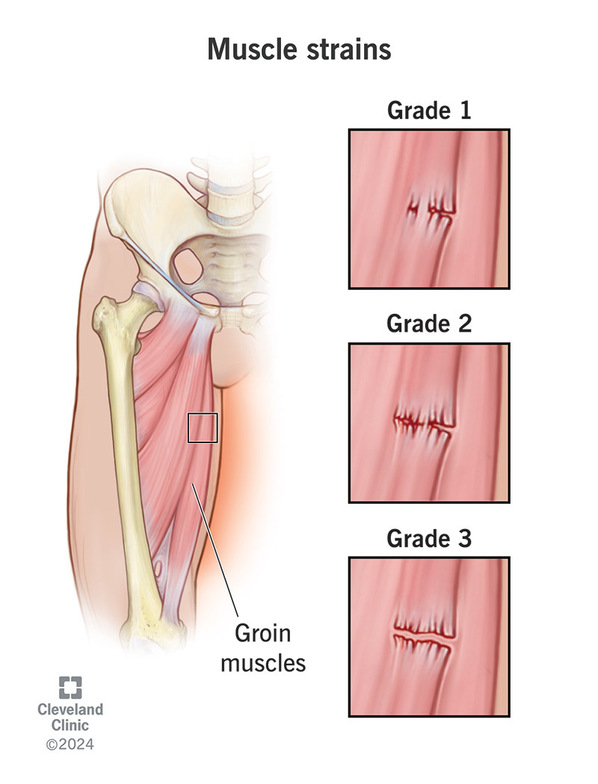
Muscular strains—commonly known as pulled muscles—are among the most frequent injuries affecting athletes, fitness enthusiasts, and even those engaged in everyday activities. Whether it’s a sudden sprint, lifting something heavy, or just an awkward movement, muscle strains can occur when muscle fibers are overstretched or torn. Understanding the process of tissue healing in muscular strains is essential for effective treatment, recovery, and prevention of further injury.
What Is a Muscular Strain?
A muscular strain is an injury to a muscle or tendon (the fibrous tissue that connects muscle to bone). Strains are categorized into three grades:
-
Grade I (Mild): A few muscle fibers are stretched or torn. Pain and tenderness are present but strength is typically preserved.
-
Grade II (Moderate): More significant tearing of muscle fibers with noticeable loss of strength and possible bruising.
-
Grade III (Severe): A complete rupture of the muscle or tendon, often requiring surgical intervention.
Phases of Tissue Healing in Muscle Strains
Tissue healing follows a predictable biological process that occurs in three overlapping phases:
1. Inflammatory Phase (0–7 Days)
What Happens:
-
The body responds to the injury with an immediate inflammatory reaction.
-
Blood vessels at the site constrict briefly, then dilate to allow immune cells (like neutrophils and macrophages) to enter the damaged area.
-
These cells clear out dead tissue and initiate the healing process.
Symptoms:
-
Pain, swelling, warmth, and redness.
-
Limited movement and tenderness.
Treatment Goals:
-
Minimize inflammation and pain.
-
Protect the area to prevent further damage.
-
Common protocols include RICE (Rest, Ice, Compression, Elevation), though updated approaches now emphasize PEACE & LOVE (Protect, Elevate, Avoid anti-inflammatories, Compress, Educate & Load, Optimism, Vascularization, Exercise).
2. Proliferative (Repair) Phase (4 Days–6 Weeks)
What Happens:
-
Fibroblasts proliferate and produce collagen, the protein that forms the framework of healing tissue.
-
New blood vessels form (angiogenesis) to supply nutrients and oxygen to the regenerating tissue.
-
Myoblasts (muscle precursor cells) start to repair or replace damaged muscle fibers.
Symptoms:
-
Pain and swelling begin to subside.
-
Range of motion and function gradually improve.
Treatment Goals:
-
Promote proper tissue repair and alignment.
-
Initiate controlled movement and stretching.
-
Begin low-impact strengthening and mobility exercises under professional guidance.
3. Remodeling Phase (3 Weeks–6 Months or More)
What Happens:
-
Collagen is reorganized to increase the strength and functionality of the tissue.
-
Scar tissue matures and integrates with the surrounding muscle.
-
Muscle fibers regenerate, and neuromuscular connections are reestablished.
Symptoms:
-
Decreased pain, nearly full range of motion.
-
Return of strength and function.
Treatment Goals:
-
Restore full function, flexibility, and strength.
-
Prevent reinjury through progressive loading and sport-specific training.
-
Focus on proprioception and coordination exercises.
- Provide simple, effective exercises for future programing
Factors Influencing Healing Time
-
Severity of the strain
-
Age and overall health
-
Nutritional status
-
Adherence to rehabilitation protocols
-
Previous history of injury
While a mild strain may heal within a few weeks, moderate to severe strains may require months of rehabilitation and, in some cases, surgical repair.
When to See a Professional
You should consult a healthcare provider if:
-
The pain is severe or worsening.
- You are competing in sports and have increased demands on recovery
-
You cannot move the injured muscle.
-
There is significant swelling or bruising.
-
You suspect a Grade III strain or a complete tear.
Conclusion
Muscle strains are common but treatable injuries. Understanding the natural phases of tissue healing helps set realistic expectations and emphasizes the importance of timely and appropriate care. With patience, proper rehabilitation, and preventative strategies, most individuals can fully recover and return to their usual activities—often stronger and more aware of their body than before. Scheduling at Strength & Spine gives you the best outcome of total healing and recovery while knowing you're enhancing your strength and stability to reduce the risk of further injury.
